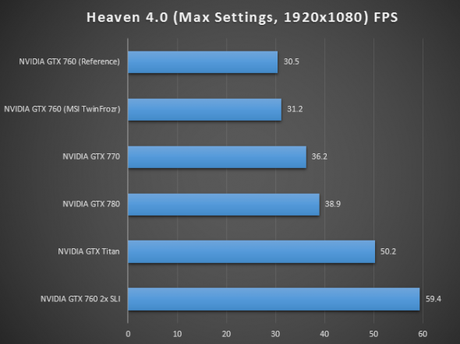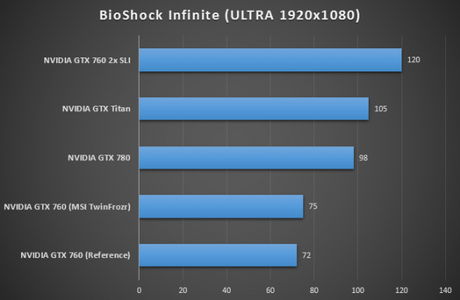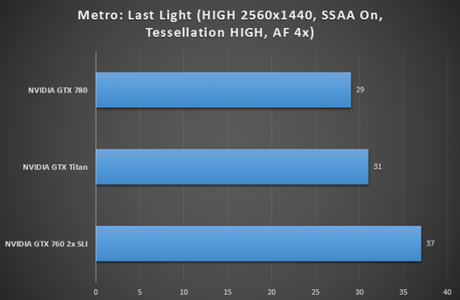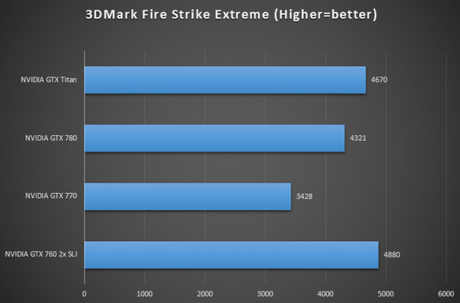As NVIDIA’s trio of graphics card launches winds down with the mainstream-level GTX 760, and only sporadic rumors of AMD’s new Radeon 8000 series launching in October, we have a few months to evaluate the best and most cost-efficient upgrade options. You may be tempted by NVIDIA’s GTX 780, which offers Titan-like performance for $350 less.
But what if I told you that running two GTX 760s in SLI yielded better performance than both the Titan and the GTX 780 — for significantly less coin?
Before we dive in and crunch some numbers, let’s examine the primary hardware in play for this test:
- 2x MSI GTX 760s (Known properly as “N760 TF 25GD5/OC”)
- NVIDIA GTX 760 Reference Card
- NVIDIA GTX 780 Reference Card
- NVIDIA GTX Titan Reference Card
All cards were benchmarked on the following system:
- MSI Z77A-G45 Motherboard
- Intel Core i7-3770K CPU
- 16GB Corsair Vengeance RAM
- 120GB Kingston V300 SSD
One final note: MSI’s Twin Frozr version of the GTX 760 is clocked slightly higher than NVIDIA’s reference card and yields, on average, a few extra frames per second across synthetic benchmarks and real-world gaming tests. At the time of publication, purchasing two of these cards on Amazon will cost $538, while a GTX 780 sells for between $649 and $729.
Synthetic and Gaming Benchmarks at 1080p


In the above tests, the Titan rightly displays its dominance, with the GTX 780 turning in great performance for the price. But in both cases the dual 760s in SLI blow past both high-end cards. The Heaven 4.0 result is especially revealing, because the software strictly measures DirectX 11 performance without calling in the CPU. And I have my test dialed up to “punishing.” 10FPS higher than a Titan, and 20FPS higher than a GTX 780 shows that not only is the GTX 760 a capable card, but two of them are a dream.

The song remains the same using BioShock Infinite’s benchmarking utility, cranking out an impressive 120FPS on Ultra quality settings.
But What About 1440p?
I preemptively heard your concern: The Titan and 780 GPUs are aimed at enthusiasts who’ve journeyed into the promise land of 1440p (2560×1440) resolution and above. Surely these dual 760s from MSI start to lose some of their appeal when we crank up the resolution, right? I’ll let the numbers do the talking:

Metro: Last Light has become the new Crysis. It’s a graphically intensive, system-stomping game and perfect for illustrating the superiority of this SLI setup.

Finally, there’s 3DMark’s Fire Strike Extreme, which I ran multiple times at 2560×1440. As you’ve come to expect by now, the scores further drive home the fact that running two GTX 760s in SLI will yield better performance across the board, and for a seriously reduced chunk of change.
I acknowledge that making the comparison between dual 760s and Titan is a bit unfair. After all, NVIDIA designed that card primarily to cater to boutique vendors and a burgeoning compact gaming rig market — specifically to deliver enthusiast performance with a single card in small form factor systems. However, pitting these cards against a GTX 780 is fair game, and I believe budget-conscious gamers who want blistering performance should absolutely choose two of MSI’s 760 SKUs over a single GTX 780.
